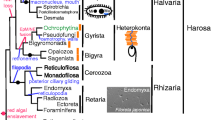Abstract
Soluble adenylyl cyclase (sAC) is an evolutionarily conserved bicarbonate sensor. In mammals, it is responsible for bicarbonate-induced, cAMP-dependent processes in sperm required for fertilization and postulated to be involved in other bicarbonate- and carbon dioxide-dependent functions throughout the body. Among eukaryotes, sAC-like cyclases have been detected in mammals and in the fungi Dictyostelium; these enzymes display extensive similarity extending through two cyclase catalytic domains and a long carboxy terminal extension. sAC-like cyclases are also found in a number of bacterial phyla (Cyanobacteria, Actinobacteria, and Proteobacteria), but these enzymes generally possess only a single catalytic domain and little, if any, homology with the remainder of the mammalian protein. Database mining through a number of recently sequenced genomes identified sAC orthologues in additional metazoan phyla (Arthropoda and Chordata) and additional bacterial phyla (Chloroflexi). Interestingly, the Chloroflexi sAC-like cyclases, a family of three enzymes from the thermophilic eubacterium, Chloroflexus aurantiacus, are more similar to eukaryotic sAC-like cyclases (i.e., mammalian sAC and Dictyostelium SgcA) than they are to other bacterial adenylyl cyclases (ACs) (i.e., from Cyanobacteria). The Chloroflexus sAC-like cyclases each possess two cyclase catalytic domains and extensive similarity with mammalian enzymes through their carboxy termini. We cloned one of the Chloroflexus sAC-like cyclases and confirmed it to be stimulated by bicarbonate. These data extend the family of organisms possessing bicarbonate-responsive ACs to numerous phyla within the bacterial and eukaryotic kingdoms.



Similar content being viewed by others
References
Braun T (1975) The effect of divalent cations on bovine spermatozoal adenylate cyclase activity. J Cyclic Nucleotide Res 1:271–81
Buck J, Sinclair ML, Schapal L, Cann MJ, Levin LR (1999) Cytosolic adenylyl cyclase defines a unique signaling molecule in mammals. Proc Natl Acad Sci USA 96:79–84
Cann MJ, Hammer A, Zhou J, Kanacher T (2003) A defined subset of adenylyl cyclases is regulated by bicarbonate ion. J Biol Chem 278:35033–35038
Chen Y, Cann MJ, Litvin TN, Iourgenko V, Sinclair ML, Levin LR, Buck J (2000) Soluble adenylyl cyclase as an evolutionarily conserved bicarbonate sensor. Science 289:625–8
Esposito G, Jaiswal BS, Xie F, Krajnc-Franken MA, Robben TJ, Strik AM, Kuil C, Philipsen RL, Van Duin M, Conti M, Gossen JA (2004) Mice deficient for soluble adenylyl cyclase are infertile because of a severe sperm-motility defect. Proc Natl Acad Sci USA 101:2993–2998
Goh PP, White IG (1988) Control of ram sperm adenylate cyclase by divalent cations. Aust J Biol Sci 41:377–385
Higgins D, Thompson J, Gibson T, Thompson JD, Higgins DG, Gibson TJ (1994) Clustal W: improving the sensitivity of progressive multiple sequence alignment through sequence weighting, position-specific gap penalties and weight matrix choice. Nucleic Acids Res 22:4673–4680
Hyne RV, Garbers DL (1979) Regulation of guinea pig sperm adenylate cyclase by calcium. Biol Reprod 21:1135–1142
Jaiswal BS, Conti M (2001) Identification and functional analysis of splice variants of the germ cell soluble adenylate cyclase. J Biol Chem 276:31698–31708
Jaiswal BS, Conti M (2003) Calcium regulation of the soluble adenylyl cyclase expressed in mammalian spermatozoa. Proc Natl Acad Sci USA 100:10676–10681
Litvin TN (2003) A novel mechanism of adenylyl cyclase activation conserved from cyanobacteria to man. In: Pharmacology. Weill Medical College and Graduate School of Cornell University, New York, p 129
Litvin TN, Kamenetsky M, Zarifyan A, Buck J, Levin LR (2003) Kinetic properties of “soluble” adenylyl cyclase. Synergism between calcium and bicarbonate. J Biol Chem 278:15922–15926
Muhia DK, Swales CA, Eckstein-Ludwig U, Saran S, Polley SD, Kelly JM, Schaap P, Krishna S, Baker DA (2003) Multiple splice variants encode a novel adenylyl cyclase of possible plastid origin expressed in the sexual stage of the malaria parasite Plasmodium falciparum. J Biol Chem 278:22014–22022
Pastor-Soler N, Beaulieu V, Litvin TN, Da Silva N, Chen Y, Brown D, Buck J, Levin LR, Breton S (2003) Bicarbonate-regulated adenylyl cyclase (sAC) is a sensor that regulates pH-dependent V-ATPase recycling. J Biol Chem 278:49523–49529
Perriere G, Gouy M (1996) WWW-Query: an on-line retrieval system for biological sequence banks. Biochimie 78:364–369
Pierson BK, Castenholz RW (1974) A phototrophic gliding filamentous bacterium of hot springs, Chloroflexus aurantiacus, gen. and sp. nov. Arch Microbiol 100:5–24
Roelofs J, Van Haastert PJ (2002) Deducing the origin of soluble adenylyl cyclase, a gene lost in multiple lineages. Mol Biol Evol 19:2239–2246
Roelofs J, Meima M, Schaap P, Van Haastert PJ (2001) The Dictyostelium homologue of mammalian soluble adenylyl cyclase encodes a guanylyl cyclase. EMBO J 20:4341–4348
Shenoy AR, Visweswariah SS (2004) Class III nucleotide cyclases in bacteria and archaebacteria: lineage-specific expansion of adenylyl cyclases and a dearth of guanylyl cyclases. FEBS Lett 561:11–21
Tang WJ, Gilman AG (1995) Construction of a soluble adenylyl cyclase activated by Gs alpha and forskolin. Science 268:1769–1772
Wuttke MS, Buck J, Levin LR (2001) Bicarbonate-regulated soluble adenylyl cyclase. J Pancreas 2:154–158
Zippin JH, Levin LR, Buck J (2001) CO(2)/HCO(3)(-)-responsive soluble adenylyl cyclase as a putative metabolic sensor. Trends Endocrinol Metab 12:366–370
Zippin JH, Chen Y, Nahirney P, Kamenetsky M, Wuttke MS, Fischman DA, Levin LR, Buck J (2003) Compartmentalization of bicarbonate-sensitive adenylyl cyclase in distinct signaling microdomains. FASEB J 17:82–84
Zippin JH, Farrell J, Huron D, Kamenetsky M, Hess KC, Fischman DA, Levin LR, Buck J (2004) Bicarbonate-responsive “soluble” adenylyl cyclase defines a nuclear cAMP microdomain. J Cell Biol 164:527–534
Acknowledgements
This work was supported in part by the Uehara Memorial Foundation (to M.K.), National Institutes of Health grants GM62328 and HD42060 (to J.B.) and HD38722 (to L.R.L.), and by the Ellison Medical Foundation (to J.B.). We thank members of the Levin/Buck laboratory for discussion.
Author information
Authors and Affiliations
Corresponding author
Additional information
Edited by C. Desplan
The nucleotide sequence of rabbit sAC has been deposited (GenBank accession number AY212921)
Rights and permissions
About this article
Cite this article
Kobayashi, M., Buck, J. & Levin, L.R. Conservation of functional domain structure in bicarbonate-regulated “soluble” adenylyl cyclases in bacteria and eukaryotes. Dev Genes Evol 214, 503–509 (2004). https://doi.org/10.1007/s00427-004-0432-2
Received:
Accepted:
Published:
Issue Date:
DOI: https://doi.org/10.1007/s00427-004-0432-2




